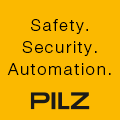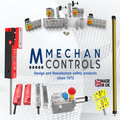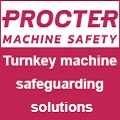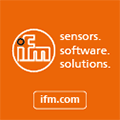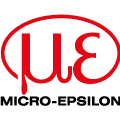
Posted to News on 22nd Jun 2010, 18:32
EN ISO 11161 - Safe design of Integrated Manufacturing Systems
Robin Carver* introduces EN ISO 11161, which is the standard for assemblies of machinery, and goes on to outline its contents and describe its relationship to the Machinery Directive 2006/42/EC and other machinery safety standards.
The European Machinery Directive, throughout its various incarnations, has always recognised 'assemblies' of machines but, in its latest manifestation as 2006/42/EC, which came into force in December 2009, it now clearly specifies the essential health and safety requirements for such assemblies. These assemblies must be considered to be whole new machines and must therefore be CE marked. Supporting guidance has recently been published as EN ISO 11161:2007+A1:2010 Safety of machinery. Integrated manufacturing systems. Basic requirements (and BS EN ISO 11161:2007+A1:2010 in the UK).
An Integrated Manufacturing Systems (IMS) is an assembly of machines that together perform a specific manufacturing function - for example, bottling lines, canning lines, cartoning lines, packaging lines, component assembly systems, palletising systems, de-palletising systems, etc. These may comprise new, partly completed and/or used machines arranged and controlled to function as an 'integral whole.' Often it is the end user that takes on the task of integrating the various machines to create the complete line. Because integrated assemblies of machines must be considered to be a whole new and different machine rather than just individual machines combined, it is, therefore, the integrator that must bear the burden of assessing and ensuring compliance of the final construction and declare its compliance as an 'integral whole' by CE marking it in accordance with the Machinery Directive 2006/42/EC.
Harmonised standards
In support of the essential health and safety requirements of the European Machinery Directive, Harmonised Standards are written; guidance for assemblies of machinery is provided in a relatively new standard EN ISO 11161:2007+A1:2010 Safety of machinery. Integrated manufacturing systems. Basic requirements. This is both a European and an International Standard that specifies the safety requirements for Integrated Manufacturing Systems that incorporate two or more interconnected machines and gives requirements and recommendations for their specification, assessment, safe design, safeguarding, co-ordination and information for use. Note that the A1:2010 revisions are not technically significant, just changes in references to other standards.
EN ISO 11161 presents a strategy for the integrator to develop the IMS specification, setting out the functional requirements and determining the foreseeable tasks and need for access and intervention. From this the integrator must identify the hazards and risks and, working in close co-operation with the user and the suppliers of the component machines and associated equipment, undertake a risk assessment from which a strategy for reducing the risks may be established.
Among the many operational features required of an IMS, and described in the standard, is that of segregated Task Zones, enabling areas of the IMS to be isolated to allow intervention tasks - such as jam clearing, setting and inspections - to take place safely while other portions of the IMS continue to function normally in automatic operation.
While EN ISO 11161 outlines the general requirements and principles of guarding, protective measures and controls associated with IMSs, it is supported by three new standards that make a significant contribution the design and safety of machinery and Integrated Manufacturing Systems:
- EN ISO 13857:2008 - Safety of machinery. Safety distances to prevent hazard zones being reached by upper and lower limbs
- EN ISO 13855:2010 Safety of machinery - Positioning of safeguards with respect to the approach speeds of parts of the human body
- EN ISO 13849-1:2008 Safety of machinery. Safety-related parts of control systems. General principles for design
This trio, in support of EN ISO 11161 and all included within the harmonised Safety of machinery series, provides the detailed guidance that is vital for the design and co-ordination of guarding, protective devices and safety-related control systems for machine assemblies and Integrated Manufacturing Systems.
Health & Safety Compliance Engineering runs a Safe design of Manufacturing Systems training course. This comprehensive engineering course gives designers and integrators of machinery, partly completed machinery, assemblies of machinery and integrated manufacturing systems an understanding of the requirements of the Machinery Directive and the supporting harmonised standards, and enables them to calculate the design requirements for guarding and protective devices, design appropriate and reliable safety-related control systems, prepare the necessary information for the use, prepare the Technical File, declare compliance and apply the CE mark.
For more information on this course or to find out how Health & Safety Compliance Engineering can assist with other machinery training needs, contact Robin Carver at +44 (0)121 745 4064, email [email protected] or go to www.hs-compliance.com.
* About the author
Robin Carver MIET MIntMC CMIOSH MIIRSM is the principal of Health & Safety Compliance Engineering, a safety systems design engineer, and a Chartered Health and Safety Practitioner with over 40 years' experience in the design and assessment of industrial machines. He is also a member of the BSI Safety of Machinery MCE/003 committee, assisting and contributing to the development of EN, ISO and IEC Standards.
Want the latest machine building news straight to your inbox? Become a MachineBuilding member for free today >>
Health & Safety Compliance Engineering
17 Bramley Drive
Hollywood
B47 5RD
UNITED KINGDOM
+44 (0)7860 231 287




